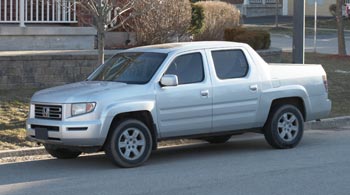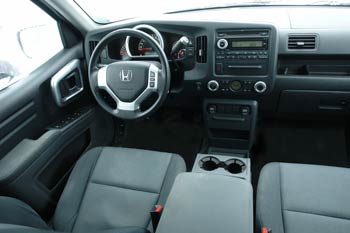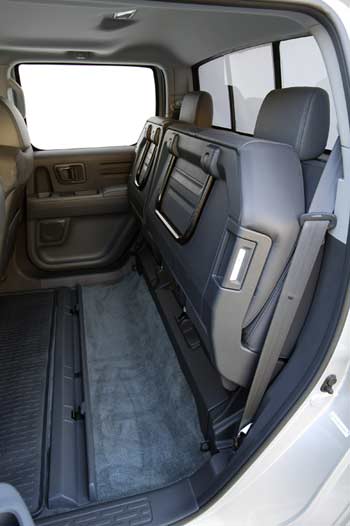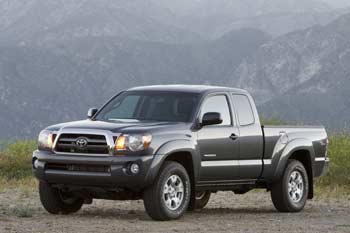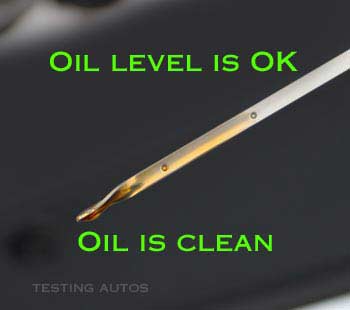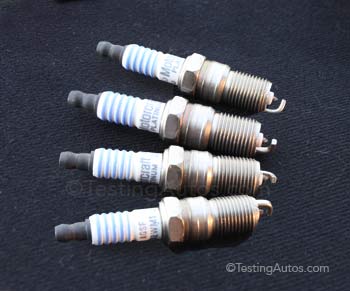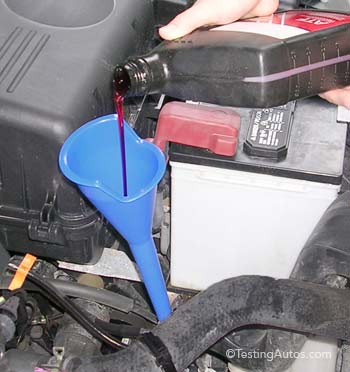2006-2014 Honda Ridgeline: Issues, Pros, and Cons – What to Watch For
Updated: December 15, 2023
The Honda Ridgeline is a unique truck: rugged in appearance, smooth in driving, and surprisingly practical. It's Honda's first truck in North America, designed for utility. It can tow a trailer, seat 5 people, and convert its in-bed trunk into a water-tight cooler on the go.The Ridgeline boasts a transverse-mounted 3.5L V6 VTEC engine paired with a 5-speed automatic transmission. Inside, it's simple and spacious, featuring numerous storage compartments and foldable rear seats.
The NHTSA rates the 2006-2010 Honda Ridgeline with 5 stars for front and side crash tests and 4 stars for rollover. Later models have not received ratings.
As of 2022, ConsumerReports rates the overall reliability of the 2007-2008 Ridgeline as "above average" and "well above average" for the 2010-2014 Ridgeline. While the Ridgeline excels in reliability, what about reported problems and repairs?
Honda Ridgeline Common Problems:
1. A leaking spool valve gasket can cause engine oil to leak onto the alternator, leading to its failure. If you spot an oil leak near the engine oil dipstick, consider replacing the spool valve assembly or its gaskets. Opting for gasket replacement is a more economical choice. An OEM spool valve assembly costs from $250 to $350.2. At higher mileage, front struts may require replacement, costing between $600 and $900 for two struts.
3. A rusted U-joint bearing in the propeller shaft can cause vibrations, especially during acceleration or deceleration. While the propeller shaft replacement is relatively straightforward, the part is expensive. Explore options to rebuild it and replace the U-joint separately for cost savings.
4. Rust and leaks in the transmission cooler lines near the radiator and power steering lines on the front subframe are common, especially in regions with winter salt use. Timely repair of leaks is crucial to prevent further damage.
5. A faulty O-ring can cause a whining noise from the power steering pump. This inexpensive and easy repair can be done with the help of videos online. Ensure to check the power steering fluid level and replace the power steering pump if the noise persists after changing the O-ring.
6. Plastic pulleys (cable guides) allowing rear seats to fold up are prone to breaking in the 2006-2011 Ridgeline. Follow Honda TSB 10-068 for an easy and inexpensive fix using replacement metal pulleys. You can find threads here detailing the fix.
7. A broken sway bar link may cause rattling or clunking noises from the front end. Prompt replacement is essential, and a thorough inspection is recommended to identify any additional damaged components.
8. Brake calipers may become seized, requiring replacement ($220-350). A malfunctioning caliper can cause "brake drag," giving the sensation that the car is not rolling freely.
9. According to Honda service bulletin TSB 07-028, a loose intermediate shaft heat shield may lead to a rattle under the truck during acceleration. Replacing the heat shield and damaged nuts or gaskets should resolve the issue.
10. Grease spatters in wheel wells or inside wheels indicate leaking CV boots. While a boot replacement is affordable, consider your mechanic's suggestion to replace the entire CV axle ($250 to $400 for one front CV axle).
11. A failing air-fuel ratio sensor (Front O2 sensor) can trigger code P0134, costing around $90-$130 in labor plus the part cost.
12. A malfunctioning TPMS sensor may keep the TPMS light on, requiring replacement ($80 to $170 for one sensor).
13. A defective A/C compressor relay could cause A/C issues. The relay is inexpensive and easily replaceable; consult YouTube videos for guidance. Address any refrigerant leaks promptly.
14. The catalytic converter might fail at higher mileage, triggering codes P0420 or P0430. Opting for an aftermarket catalytic converter could be a cost-effective solution.
15. Misfiring codes for the rear cylinder bank are often caused by fouled spark plugs. Replacing 3 rear spark plugs or all 6 if due soon is a common repair. Sometimes an ignition coil could fail causing the same problem. Mechanics test ignition coils by swapping a suspected coil with a different cylinder and checking if misfiring has moved with the coil, in which case the coil is bad.
16. In the 2006 Ridgeline, a cracked piston ring allowing oil into cylinder 4 can cause trouble code P0304: Cylinder 4 Misfire. Symptoms include a puff of smoke from the exhaust on startup. The repair is costly.
Check the NHTSA website for recalls.
When to Replace a Timing Belt in a Honda Ridgeline?
The engine in all Ridgelines comes with a timing belt that needs replacement at regular intervals.Severe Conditions: Replace the timing belt every 60,000 miles/100,000 km for regular extreme temperature driving or towing a trailer.
Normal Conditions: Change the timing belt according to the Maintenance Minder under Maintenance Sub Item 4, usually at around 100,000 miles or 160,000 km.
Timing Belt Replacement: The timing belt kit replacement costs between $500 and $900, typically including a new timing belt, tensioner, water pump, fresh coolant, and all six spark plugs. Have it done by a knowledgeable mechanic for precision.
Can an old timing belt break if you keep driving? Yes, leading to potential engine damage, since the 3.5L V6 is an interference engine. Consider this risk if your timing belt is overdue for replacement.
Related posts:
2005-2015 Toyota Tacoma
How does Honda Ridgeline VTM-4 4WD System work?
The Ridgeline's Variable Torque Management 4-Wheel Drive system allows torque distribution to the front axle while cruising, shifting to both front and rear axles during acceleration and slippery conditions. Pressing the VTM-4 lock button sends maximum torque to the rear axle, aiding in getting unstuck in slippery conditions.Caution: Avoid using the VTM-4 lock on dry pavement during regular driving, as it may damage the rear differential when turning. Refer to your Owner's Manual for details.
Honda Ridgeline Towing and Flatbed:
The Ridgeline can tow up to 5,000 lbs with two occupants and 4,500 lbs with five occupants. The tailgate opens in two ways: down like in a typical pick-up, and to the side like a door. The flatbed is 49 inches (4 feet) wide and 60 inches (5 feet) long with the tailgate up. An in-bed trunk also allows you to store 8.5 cubic feet of cargo, perfect for groceries or a few bags of golf clubs. It also has a drain plug, allowing you to use it as a cooler for your next camping trip. The spare is located under the bed and can be accessed through the in-bed trunk opening.Fuel Economy:
According to the EPA, the 2006-2011 Ridgeline gets 15/20 mpg city/highway. The 2012-2014 Ridgeline gets a slightly better 16/21 mpg city/highway rating. On a full tank of gas, the Ridgeline can travel up to 374 miles (602 km).Pros:
Reliability, responsive ride and handling, holds value well, safety ratings, roomy and comfortable interior, easy entry and exit, rear seats fold up, an in-bed trunk with drain plug, tailgate opens in two directions, non-intrusive wheel wells in the flatbed.Cons:
Fuel economy, only comes with the 3.5L V6 with automatic transmission, steering wheel does not telescope, rear seat legroom may be tight for taller passengers, lacks the flatbed length and towing capacity of a full-size truck.What to look for when buying a used Honda Ridgeline:
If considering a used first-generation Ridgeline, opt for 2009 and newer models for improved overall reliability. During a test drive, watch out for a puff of smoke from the exhaust on startup – a red flag to avoid the vehicle.Avoid vehicles with a persistent Check Engine light or rough engine operation. Check the automatic transmission for smooth shifting through all gears and any signs of slipping. Test the vehicle in reverse and fully turn the wheel in each direction.
Prior to purchase, have an independent mechanic inspect the truck on a lift. Steer clear if crucial components show severe rust, especially in regions with winter salt use. Instances of rusted radiator fittings failing have led to coolant mixing with transmission fluid, resulting in costly repairs. Refer to this thread for more details.
